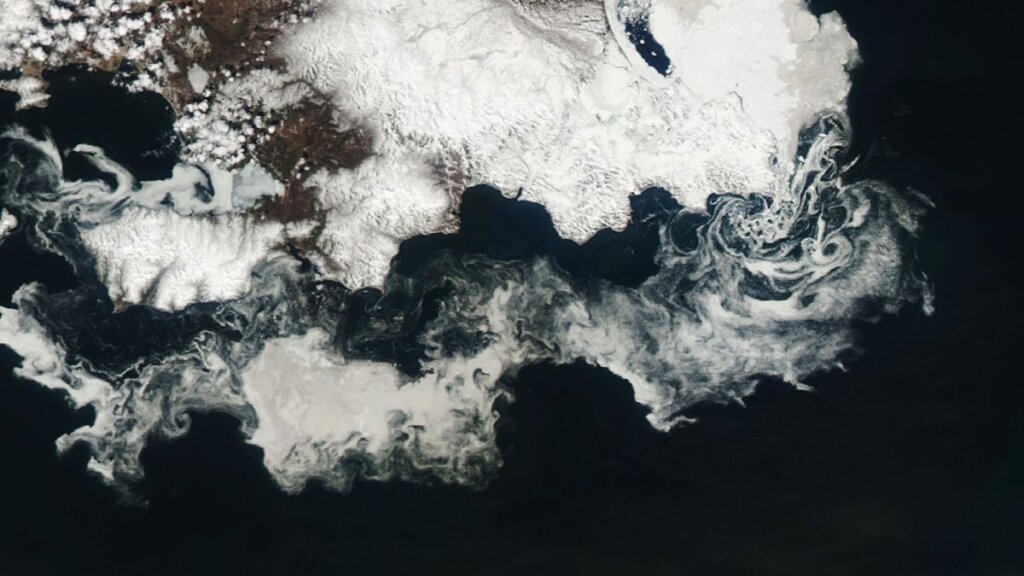A stunning new satellite image shows an enormous mass of melting sea ice elegantly swirling around a Russian peninsula in the Arctic.
Although beautiful, the scene is a somber reminder of the ever-increasing effects of climate change.
NASA’s Aqua satellite snapped the dazzling ice display on May 28 twirling around the Sea of Okhotsk for hundreds of miles, just off the coast of Russia’s snow-covered P’yagina Peninsula. The image was released on June 12 by NASA’s Earth Observatory.
The ethereal white swirls, which appear every year, are made up of melting sea ice being dragged around by ocean currents. The P’yagina Peninsula is a hotspot for these types of swirls because cold air and fresh water deposited into the sea by rivers help create particularly thick sea ice, some of which can still be seen hugging the peninsula’s north coastline in the image.
When the sea ice melts in spring and summer, the fracturing ice chunks are pushed south by the wind into vortex-like ocean currents created by a group of small islands located to the south of the landmass’ main point, according to the Earth Observatory.
Ice swirls like this can come in a range of shapes and sizes. In December 2022, an extreme cold snap in the U.K. created a host of mini ice swirls, or “ice pancakes,” on rivers in Scotland that were formed by tiny spiraling currents known as eddies.
Related: Look at this awesome photo of Earth from an Indian ocean satellite
The larger Russian swirls can sometimes persist for months and are occasionally pushed as far south as Japan. In 2018, several large swirls, each measuring more than 31 miles (50 kilometers) across, were spotted off the coast of Hokkaido, the country’s northernmost island, Japanese news site The Mainichi reported at the time.
The swirls are also appearing earlier every year because there is less sea ice developing in the Arctic over winter and what sea ice there is breaks up earlier due to the effects of human-caused climate change.
On March 6, the Arctic reached its annual maximum sea ice extent — the point at which the largest surface area of the ocean is covered by ice. This year’s maximum extent was the 6th lowest on record, meaning there was a lot less sea ice than normal, according to the National Snow and Ice Data Center. Since then, the sea ice in the Sea of Okhotsk has melted away at a faster rate than the rest of the Arctic for unknown reasons, according to the NSIDC.
A study published Feb. 14 in the journal Atmosphere-Ocean revealed that the sea ice extent in the Sea of Okhotsk decreased by about 9% per decade between 1979 and 2010.
Sea ice is also disappearing in Antarctica. In February, the world’s most southerly continent experienced a record-low minimum sea ice extent, where sea ice coverage reached its lowest point, for the second year in a row.

